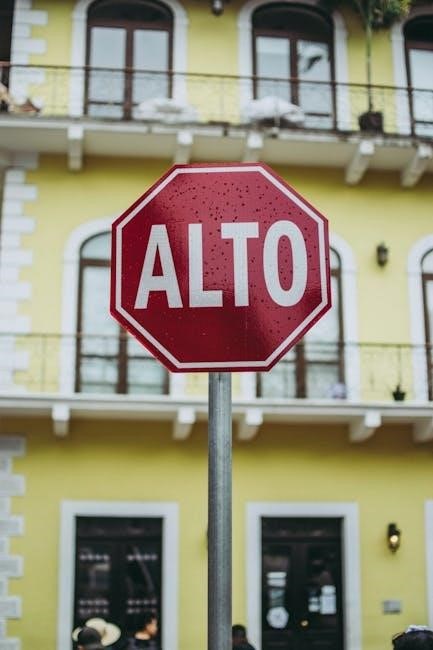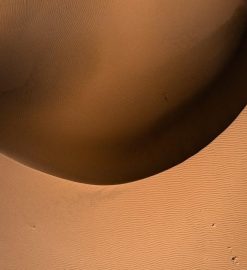pequena czarda alto sax pdf

Pedro Iturralde’s Pequeña Czarda is a captivating piece for alto saxophone and piano, blending folk influences with classical techniques. Its PDF sheet music is widely available online, offering a challenging yet rewarding experience for saxophonists and pianists alike, making it a staple in modern saxophone repertoire.
1.1 Overview of the Piece
Pequeña Czarda is a vibrant composition for alto saxophone and piano, showcasing Pedro Iturralde’s mastery of blending folk rhythms with classical techniques. The piece features a six-page score with tempo markings such as Larghetto (66) and Andante (72), along with dynamic instructions. Its structure and emotional depth make it a popular choice for developing saxophonists, offering both technical challenges and expressive opportunities.
1.2 Historical Context and Composer Background
Pedro Iturralde, a Spanish composer, created Pequeña Czarda as part of his contributions to saxophone music. His work often blends classical techniques with folk influences, reflecting his cultural heritage. Iturralde’s compositions are celebrated for their technical and expressive demands, making them integral to modern saxophone repertoire. His music bridges traditional and contemporary styles, inspiring both classical and jazz musicians worldwide.
Composer: Pedro Iturralde
Pedro Iturralde is a renowned Spanish composer, celebrated for his work Pequeña Czarda, which significantly impacts the saxophone repertoire with its unique blend of folk and classical styles.
2.1 Biography of Pedro Iturralde
Pedro Iturralde is a distinguished Spanish saxophonist and composer, recognized for his contributions to contemporary classical music. Born in Madrid, he has been instrumental in popularizing the saxophone, blending traditional and modern styles. His compositions, such as Pequeña Czarda, reflect a deep appreciation for cultural influences and technical mastery, making him a significant figure in the music world.
2.2 His Contributions to Saxophone Music
Pedro Iturralde has significantly enriched saxophone music by creating works that blend folk influences with classical techniques. His compositions, such as Pequeña Czarda, expand the saxophone repertoire and offer technical and musical challenges for performers. Iturralde’s contributions are celebrated in both classical and jazz circles, making him a pivotal figure in the evolution of saxophone music.
Musical Composition
Pequeña Czarda features a structured blend of folk-inspired melodies and classical techniques. The piece includes tempo markings like Larghetto and Andante, with dynamic contrasts, creating a vibrant musical dialogue between the alto saxophone and piano.
3.1 Structure and Form of “Pequeña Czarda”
Pequeña Czarda is structured in two main sections, Larghetto and Andante, with tempo changes and dynamic contrasts. The piece begins with a lyrical melody in the saxophone, accompanied by a harmonic piano base, gradually evolving into a more rhythmic and technically demanding dialogue between the instruments, showcasing a balance of melody and virtuosity.
3.2 Tempo and Dynamic Markings
The piece features clear tempo and dynamic markings, with sections marked Larghetto (66 BPM) and Andante (72 BPM). Dynamics range from mf to p, with expressive indications like dolce and molto accelerando, guiding performers to achieve the desired emotional and technical expression, ensuring a balanced interpretation of Iturralde’s composition.

Instrumentation
Pequeña Czarda is scored for alto saxophone and piano, with arrangements also available for solo piano, showcasing the versatility of the piece for different instrumental settings.
4.1 Alto Saxophone and Piano Arrangement
Pequeña Czarda is primarily arranged for alto saxophone and piano, with the saxophone taking the melodic lead while the piano provides harmonic and rhythmic support. This arrangement highlights the dialogue between the two instruments, creating a dynamic interplay. The piece also exists in versions for solo piano and other combinations, showcasing its versatility. The alto saxophone’s expressive qualities are particularly emphasized in Iturralde’s writing.
4.2 Role of Each Instrument in the Piece
The alto saxophone delivers the melodic lead, showcasing its expressive and technical capabilities, while the piano provides harmonic foundation and rhythmic drive. The saxophone’s agility is highlighted through intricate passages, while the piano underscores dynamic shifts and emotional depth. This interplay creates a rich, layered sound, emphasizing the dialogue between the two instruments in Iturralde’s composition.
Sheet Music and PDF Availability
The sheet music for Pequeña Czarda is readily available as a PDF, featuring detailed tempo and dynamic markings. It can be downloaded from various online music platforms.
5.1 Features of the “Pequeña Czarda” PDF
The PDF of Pequeña Czarda includes detailed tempo markings, such as Larghetto (66) and Andante (72), along with dynamic indicators like mf and dolce. The 16-page score is arranged for alto saxophone and piano, offering a clear and professionally formatted layout. It also features accelerando sections, making it a comprehensive resource for musicians seeking to master the piece.
5.2 Where to Download the Sheet Music
The sheet music for Pequeña Czarda can be downloaded from various online platforms. It is available as a PDF file, sized at 374KB, and can be accessed through sources like CamScanner or specific music repositories. Additionally, arrangements by Jeremy Lee and Manuel Alejandre Prada are available for download, ensuring multiple editions are accessible for musicians seeking to perform the piece.
Performance Considerations
Pequeña Czarda requires precise articulation and dynamic control, with tempo markings like Larghetto (66) and Andante (72). Musicians must master its blend of folk and classical styles to deliver an expressive performance.
6.1 Technical Challenges for Saxophonists
The piece demands precise articulation, dynamic control, and mastery of intricate passages. Saxophonists must navigate rapid tempos and complex fingerings while maintaining intonation. The alternating tempos, such as Larghetto (66) and Andante (72), require strict rhythmic accuracy. Dynamic contrasts and nuanced phrasing add depth, challenging even experienced players to balance technical precision with expressive interpretation.
6.2 Interpretation Tips for Pianists
Pianists should emphasize harmonic richness and rhythmic clarity, supporting the saxophone’s melodic lines. Dynamics like mf and dolce require sensitive touch. Balancing chordal accompaniments with delicate arpeggios ensures the saxophone remains prominent. Attention to tempo changes, such as the transition from Larghetto to Andante, is crucial for maintaining cohesion. Expressive phrasing and subtle pedaling enhance the piece’s emotional depth and cultural essence.

Cultural and Historical Significance
Pequeña Czarda bridges folk traditions with classical music, reflecting Pedro Iturralde’s Spanish heritage. Its unique blend has elevated the saxophone’s role in classical and jazz, ensuring its enduring relevance.
7.1 Influence of Folk Music on the Composition
Pequeña Czarda reflects Pedro Iturralde’s deep connection to Spanish folk traditions, blending vibrant rhythms and melodies with classical structures. The piece captures the emotional depth and rhythmic energy of folk music, creating a unique dialogue between the alto saxophone and piano. This cultural synthesis has made it a celebrated work, showcasing the saxophone’s versatility in interpreting rich musical heritage while maintaining its classical essence.
7.2 Reception in the Classical and Jazz Communities
Pequeña Czarda has garnered acclaim in both classical and jazz circles for its technical brilliance and emotional depth. Classical musicians appreciate its structured composition and nuanced dynamics, while jazz enthusiasts admire its improvisational potential. The piece bridges genres, making it a beloved staple in saxophone repertoire and a testament to Iturralde’s ability to fuse diverse musical traditions into a captivating work that resonates with a wide audience.

Analyzing the Score
The score features a Larghetto tempo (66) with dynamic markings like mf and dolce, showcasing accelerando sections and intricate phrasing for alto saxophone, supported by a harmonic piano accompaniment.
8.1 Detailed Breakdown of the Sheet Music
The sheet music for Pequeña Czarda features a Larghetto tempo (66 BPM) with dynamic markings like mf and dolce. It includes accelerando sections, intricate phrasing, and harmonic interplay between the alto saxophone and piano. The score is structured in 16 pages, with notable passages requiring precise articulation and breath control. The piano accompaniment provides a rich harmonic foundation, while the saxophone melody showcases lyrical and technical challenges.
8.2 Notable Passages and Phrases
The sheet music highlights a Larghetto section (66 BPM) with dynamic contrasts, marked mf and dolce. Accelerando passages and intricate phrasing demand precise control. The alto saxophone’s lyrical melody in page 2 contrasts with the piano’s harmonic support. Technical challenges include rapid arpeggios and nuanced articulations, while the Andante (72 BPM) section offers expressive opportunities, blending folk nuances with classical refinement.

Educational Value
Pequeña Czarda is a valuable educational resource for alto saxophonists, offering technical challenges and interpretive depth. Its structured format aids in developing precision, phrasing, and dynamic control, making it ideal for advanced students seeking to refine their skills through classical and folk-inspired repertoire.
9.1 Use in Music Education for Saxophonists
Pequeña Czarda serves as an excellent educational tool for saxophonists, offering a blend of technical and interpretive challenges. Its structured form and dynamic markings help students develop precision, breath control, and expressive phrasing. The piece’s folk-inspired melodies and classical harmonies provide a rich context for exploring diverse musical styles, making it an ideal work for advancing college-level saxophonists seeking to refine their artistic and technical abilities.
9.2 Benefits for Developing Musicians
Pequeña Czarda offers significant benefits for developing musicians, enhancing phrasing, tone control, and rhythmic accuracy. Its diverse tempos and dynamics foster adaptability, while the interplay between saxophone and piano cultivates ensemble skills. The piece’s emotional depth encourages expressive interpretation, preparing musicians for both classical and jazz repertoire. Regular practice of this work strengthens technical proficiency and musicality, making it a valuable addition to a developing artist’s practice routine.
Performance and Recording History
Pequeña Czarda has been widely performed and recorded by renowned saxophonists and pianists, showcasing its timeless appeal. Its intricate rhythms and emotional depth make it a staple in classical and jazz performances.
10.1 Notable Performances and Artists
Pequeña Czarda has been performed by notable saxophonists such as Vladlen Vozhzhaev, whose 2023 rendition highlighted the piece’s emotional depth; Jeremy Lee’s transcription for two alto saxophones and piano has also gained recognition, showcasing its versatility. The work’s appeal spans classical and jazz circles, making it a favorite among both traditional and contemporary artists, further cementing its place in saxophone repertoire.
10.2 Recordings and Interpretations Over Time
Recordings of Pequeña Czarda have evolved, showcasing its timeless appeal. Notable interpretations include Vladlen Vozhzhaev’s 2023 recording, which emphasizes the piece’s emotional depth. Jeremy Lee’s transcription for two alto saxophones and piano has also been widely appreciated, highlighting the work’s versatility. Over time, the piece has been embraced by both classical and jazz musicians, with each interpretation offering a unique perspective on its cultural and musical significance.
Comparison with Other Works
Pequeña Czarda stands out among Pedro Iturralde’s compositions for its unique blend of folk and classical elements. Compared to other works like Crespusculo y Huida or Aires de Bilbao, it showcases a more intricate rhythmic and emotional depth, making it a distinctive piece in his repertoire.
11.1 Similar Pieces in Iturralde’s Catalog
Pedro Iturralde’s catalog features works like Aires de Bilbao and Crespusculo y Huida, which share Pequeña Czarda’s blend of folk influences and technical complexity. These pieces highlight Iturralde’s mastery in combining traditional Spanish melodies with modern saxophone techniques, creating a cohesive style that appeals to both classical and jazz audiences. His compositions remain essential for advancing saxophonists seeking to explore diverse musical expressions.
11.2 Comparison to Other Saxophone Repertoire
Pequeña Czarda stands out in the saxophone repertoire for its unique blend of folk-inspired melodies and classical virtuosity. While similar to Iturralde’s other works like Aires de Bilbao, it also aligns with standard repertoire pieces such as Jacques Ibert’s Concertino da Camera and François Borne’s Fantaisie Brillante. Its technical and expressive demands make it a staple alongside Sonatas by Creston and Hindemith, showcasing its significance in modern saxophone literature.
Pequeña Czarda is a vital work in saxophone literature, offering rich cultural depth and technical challenges. Its availability as a PDF ensures accessibility for musicians worldwide, solidifying its place as a cherished and educational piece in classical and jazz saxophone repertoire.
12.1 Summary of the Piece’s Importance
Pequeña Czarda stands as a significant work in saxophone literature, bridging folk traditions with classical sophistication. Its availability in PDF format has made it accessible to musicians globally, ensuring its relevance in both educational and performance contexts. The piece’s cultural depth and technical demands make it a cornerstone for alto saxophonists seeking to expand their repertoire and artistic expression.
12.2 Final Thoughts on “Pequeña Czarda”
Pequeña Czarda remains a timeless gem in saxophone literature, offering a rich blend of cultural depth and technical brilliance. Its widespread availability as a PDF has made it a favorite among musicians, ensuring its continued relevance. This piece not only highlights Pedro Iturralde’s mastery but also serves as a cornerstone for developing saxophonists, leaving a lasting legacy in classical and jazz music.



Leave a Reply
You must be logged in to post a comment.